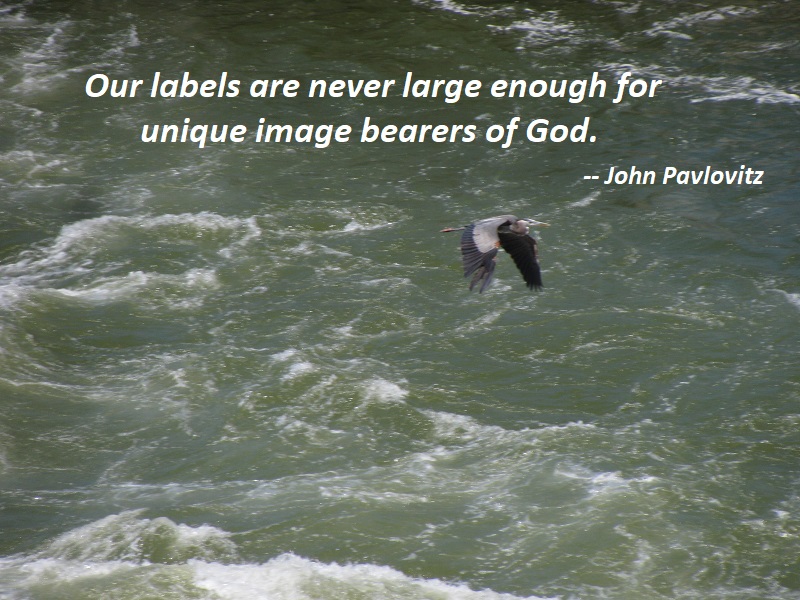The beauty of the bigger table is that it creates proximity in the way Jesus did. It destroys distance between people, and distance — whether real or imagined — is the enemy of relationship. This chasm allows us to otherize people with little accountability to their reality. It enables us to hold onto the belief that the crudely drawn caricatures we fashion for those we disagree with are at all accurate, allowing us to craft a clearly defined us-vs.-them narrative and place them opposite us. This simple narrative can’t accommodate people’s individual stories, as this is too labor intensive and time consuming. Instead it lumps those stories together into the closest-fitting generalization (a political party, a religious tradition, a people-group stereotype) and operates with that as truth. But these containers are simply never adequate. Our labels are never large enough for unique image bearers of God, and unless we become relentless in really straining to see individual people, we will always default to this easy, lazy shorthand, and we will always shortchange the beauty within them. We’ll also be satisfied viewing them from this safe distance of our self-righteousness and shouting through bullhorns or shaking tambourines.
— John Pavlovitz, A Bigger Table, p. 120-121
Photo: Great Falls National Park, June 14, 2016
